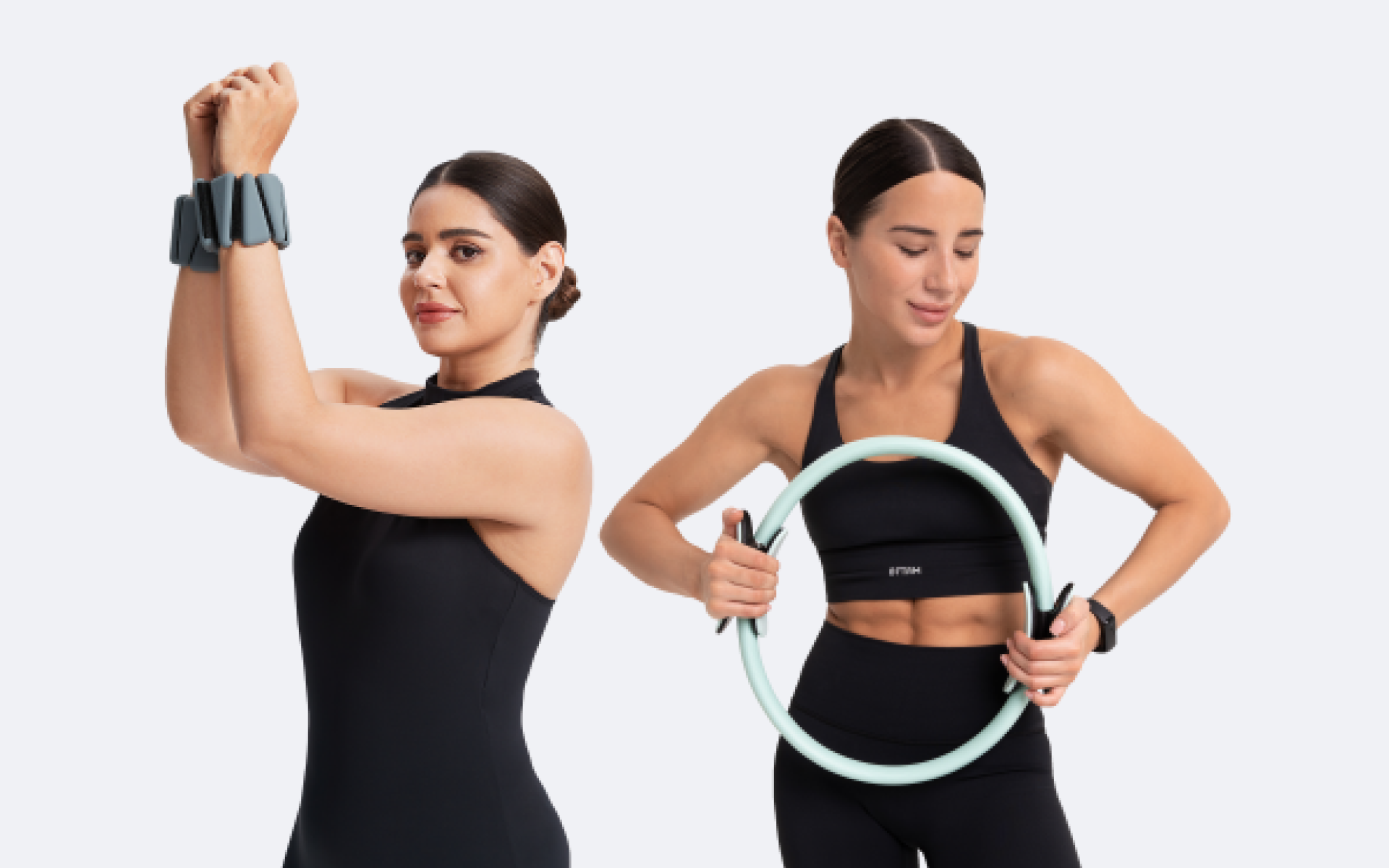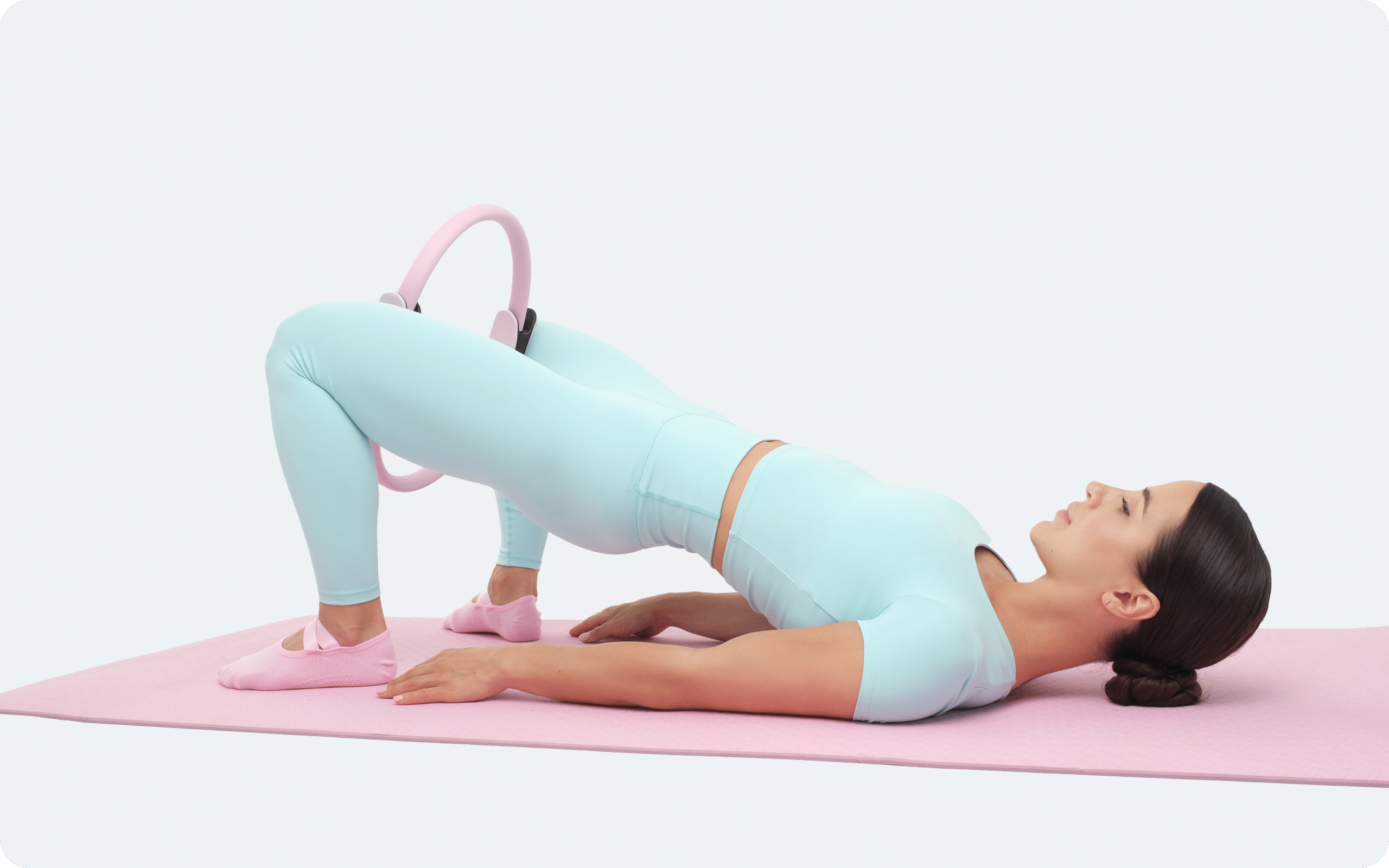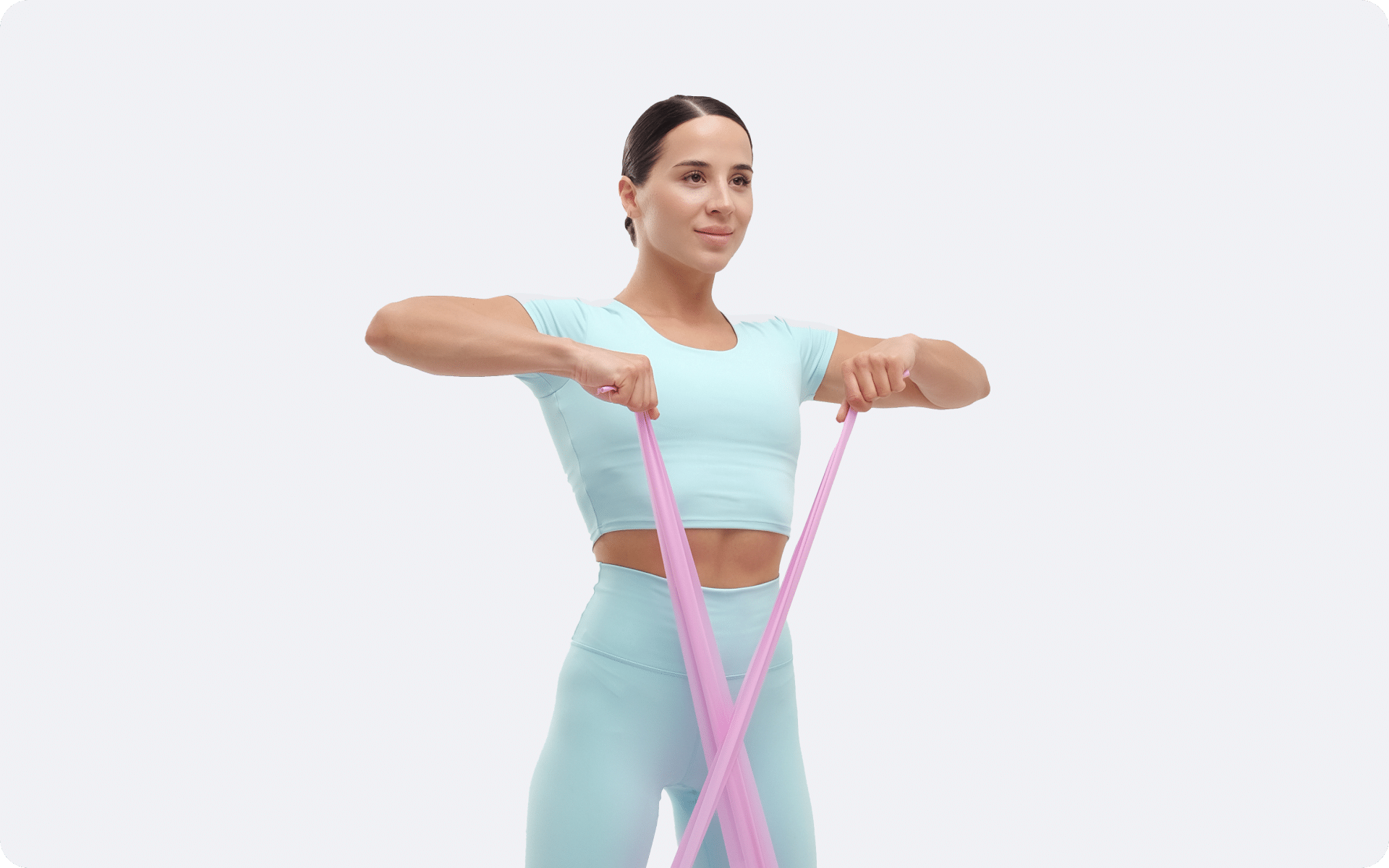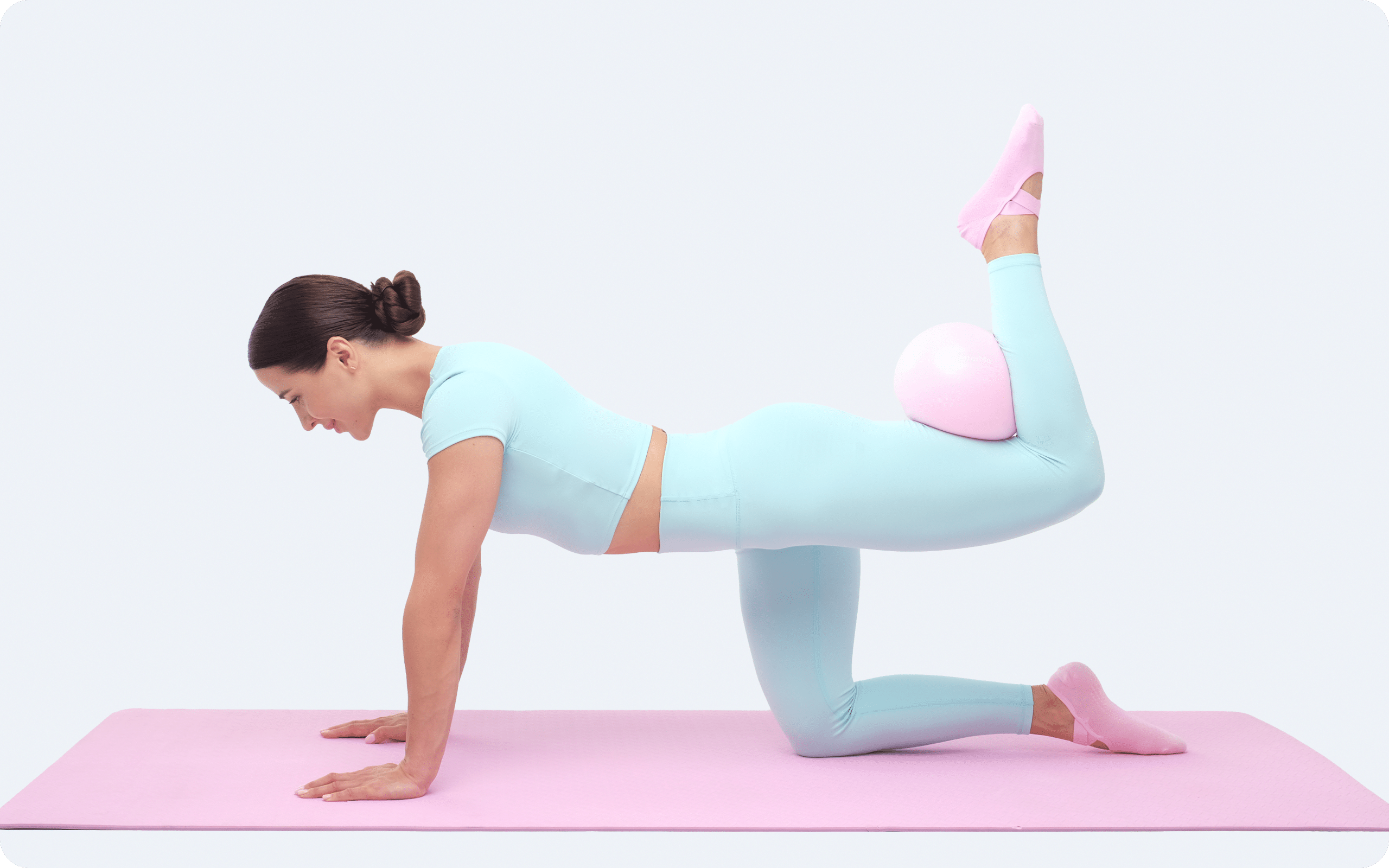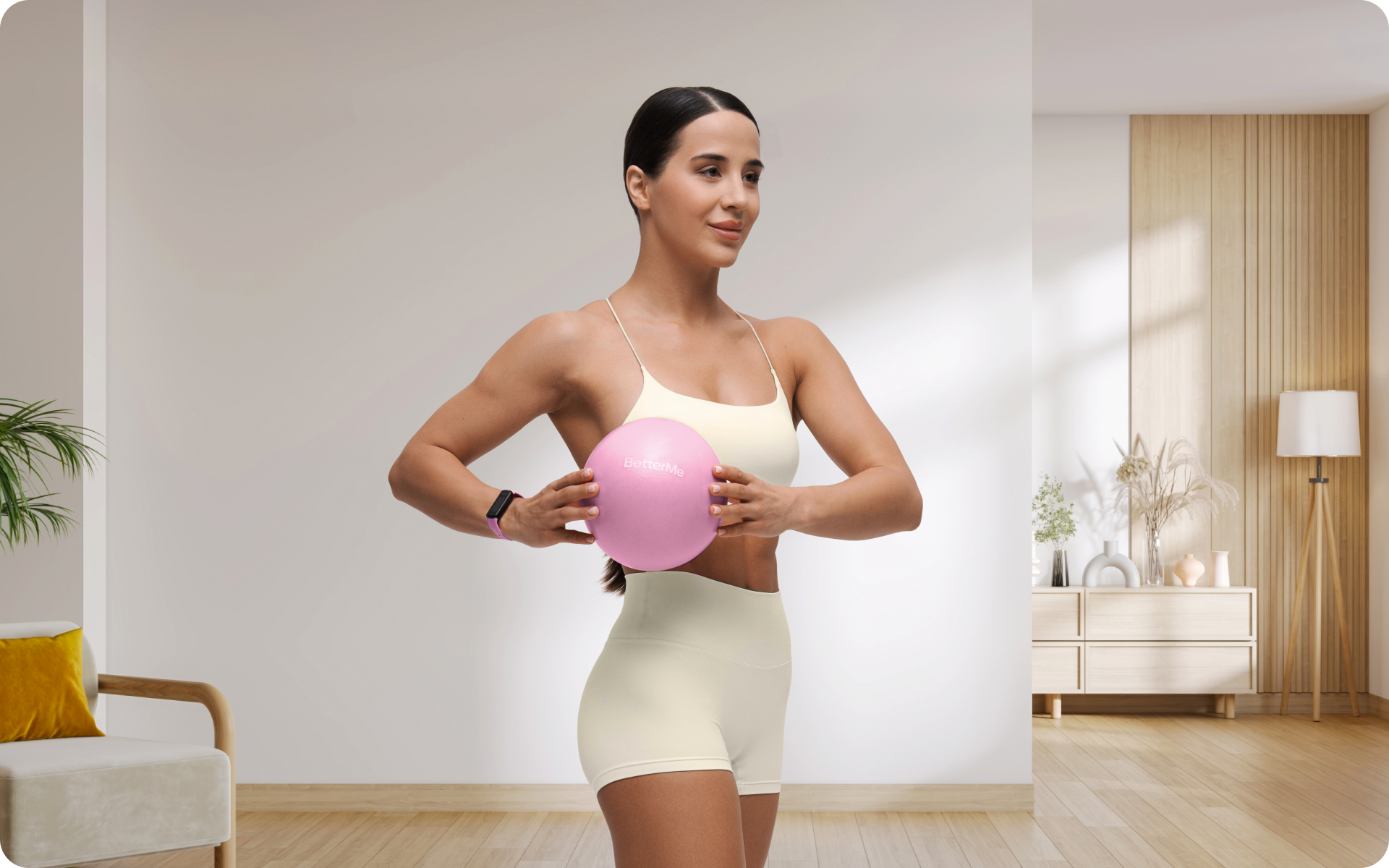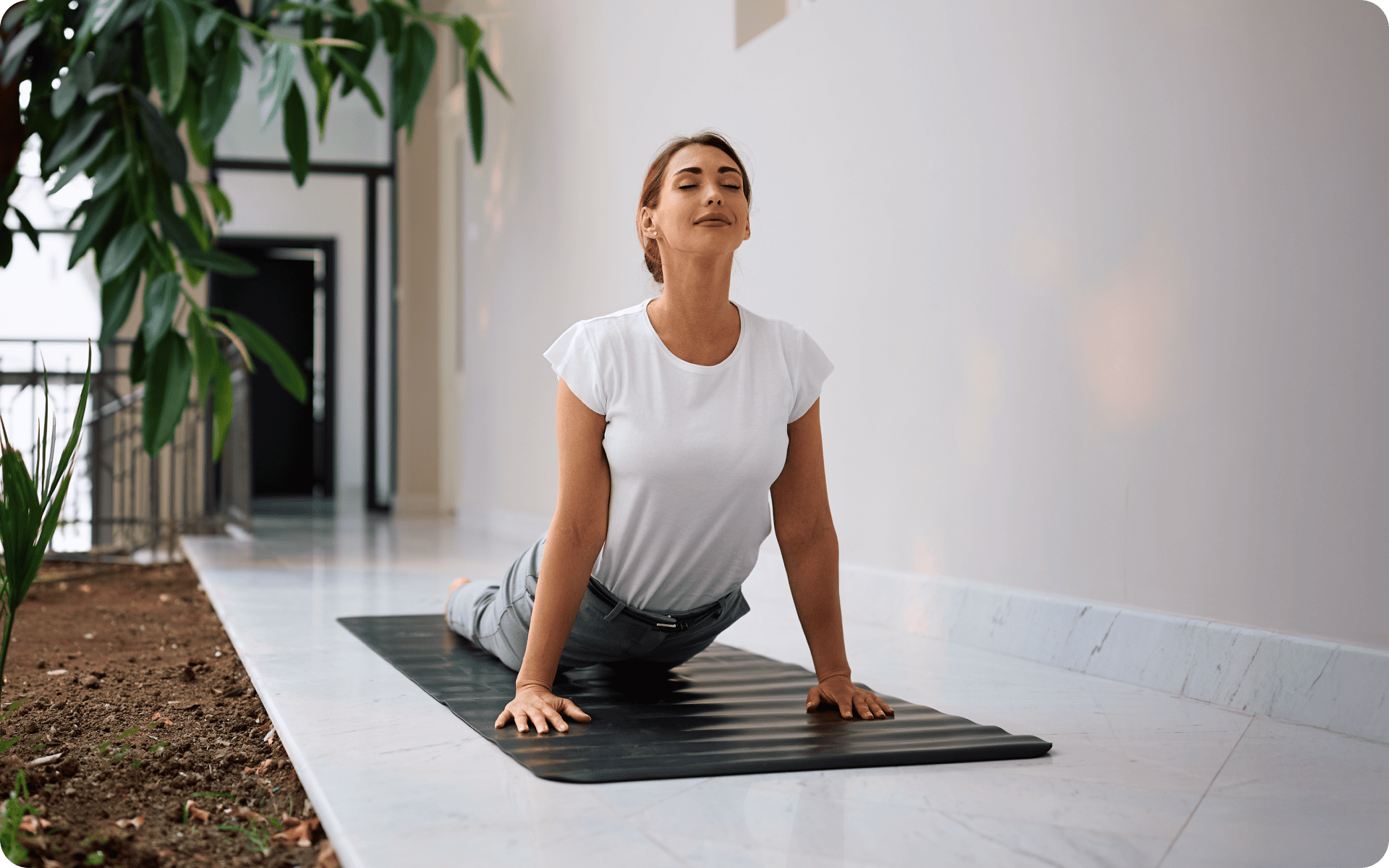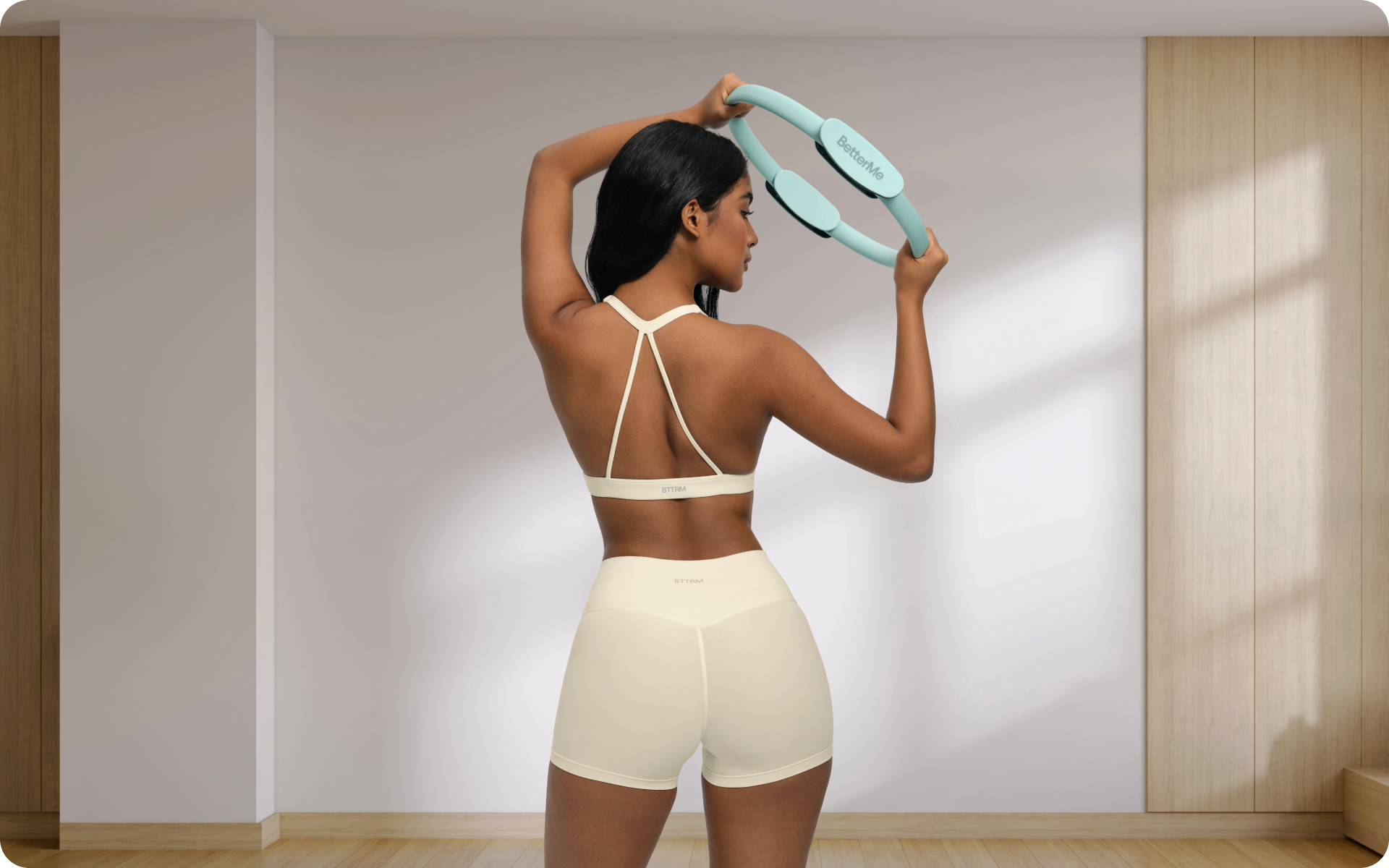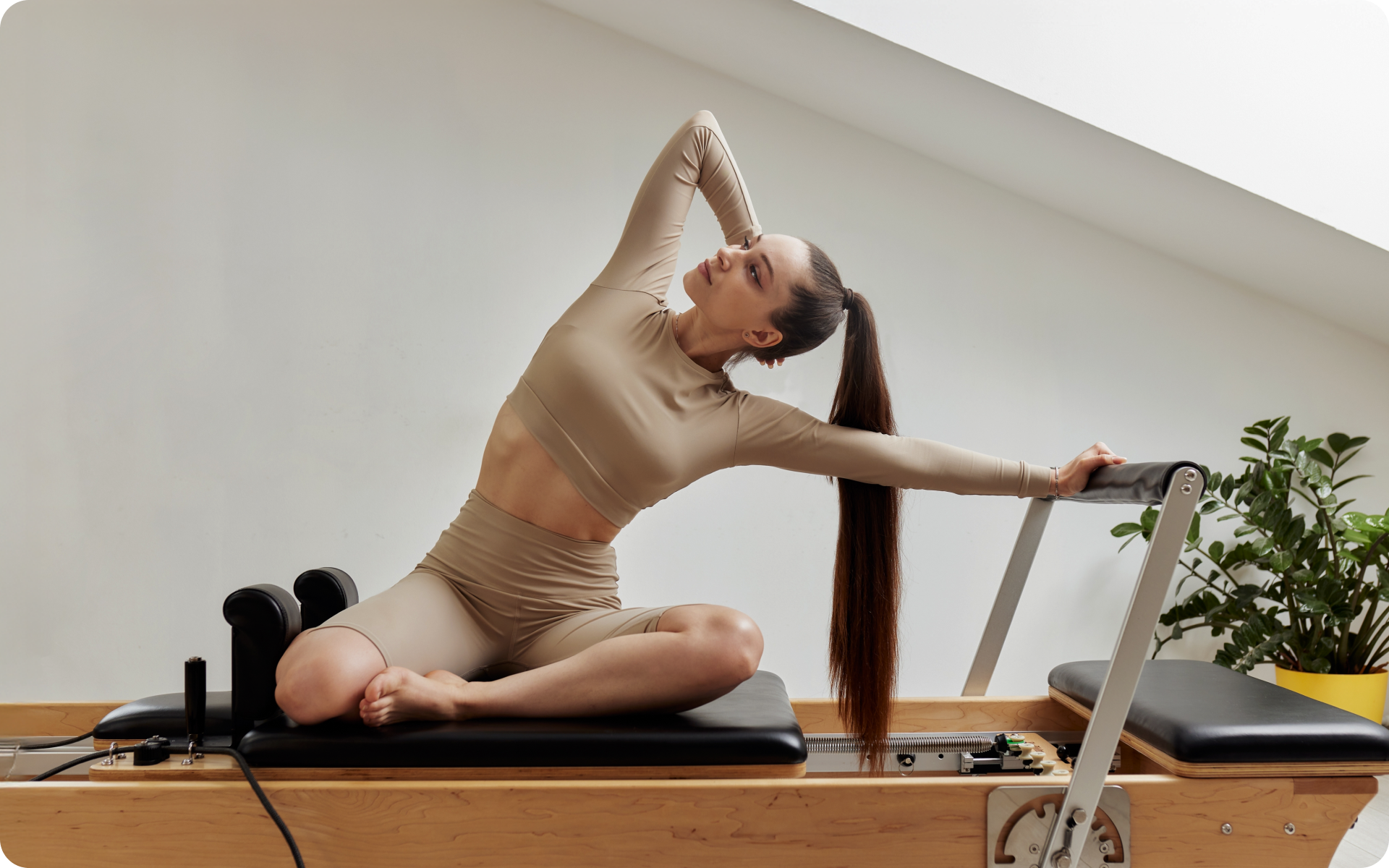Pilates is one of the most effective forms of exercise for building full-body strength and flexibility. Pilates moves are popular for the lean, toned muscles they can create, in addition to the focus on breath, alignment, and mind-body connection.
The basics of Pilates refers to the original 34 exercises designed by Joseph Pilates in his book. Sadly, most of us don’t have the time (or patience) to do all of them.
Here’s a guide to 10 of the foundational Pilates movements. These exercises work your whole body, particularly the core muscles. Consistently practicing these exercises 3-4 times a week will help you build a strong and flexible body.
How Many Basic Pilates Moves Are There?
Joseph Pilates created 34 exercises that are considered to be the foundation of his method. These exercises are divided into two categories – mat work and equipment (3).
The mat work consists of 34 exercises. The equipment consists of various items such as the Reformer, Cadillac, Wunda Chair, and others that provide resistance and support for a deeper practice (2).
Over the years, there have been countless variations and modifications, which makes the exact number of basic Pilates moves difficult to determine.
In this guide, we will focus on just 10 of the classic Pilates mat work movements that can be easily done at home. They require no equipment, just a mat or comfortable surface to lie on.
What Are Some Pilates Moves?
The Hundred, the Roll Up, and the Single Leg Stretch are just a few classic Pilates movements that you may have heard of. However, there are many more exercises that target different muscle groups and challenge your body in unique ways.
Here’s a breakdown of the 10 basic Pilates exercises that will give you a strong foundation for your practice:
The Hundred
The Hundred is one of the most iconic Pilates movements for beginners and it targets primarily the abdominal muscles.
Along with the major work on the abs, the hip flexors and the stabilizer muscles of the spine get a minor workout as they contribute to maintaining the position and movement.
This exercise involves a rhythmic pumping of the arms while holding an abdominal chest lift position, which increases blood circulation and stimulates the respiratory system, thereby warming up the body. It is great for developing core stability and stamina.
To perform The Hundred:
- Lie on your back with your legs in table-top position, arms overhead, palms facing up.
- Lift your arms, head, and chest, bringing your arms to the sides of your body, parallel to the mat, and straighten your legs forward (or keep them in table-top for easier version)
- Extend your arms and pulse them up and down in a small range of motion.
- Inhale for five arm pumps and exhale for five pumps, constituting ten pumps in total. Repeat this for 10 cycles until you reach 100 pumps.
1) Variation with a long resistance band
This variation helps engage the core muscles even more, while also adding the extra challenge to the arm muscles.
- Lie supine, legs in tabletop position, arms overhead, holding the band securely in both hands.
- On your exhale, lift your head and chest, bringing your arms straight up toward the ceiling and stretch the band slightly to the sides.
- Keep your legs in table-top position for an easier version or extend them straight into a diagonal line.
- Instead of pumping your arms up and down, maintain a static hold with the resistance band, keeping your arms extended toward the ceiling. Ensure that there’s tension in the band throughout the exercise.
- Focus on maintaining stability through your core and pelvis while holding a static arm position. Keep your shoulders relaxed and away from your ears.
- Breathe evenly, exhaling and inhaling for a 5 count. Hold the position for a total count of 100, maintaining a steady pace and tension in the band.
2) Variation with a loop band
This modified version of The Hundred with a Pilates loop band adds an extra element of resistance and engagement to the leg muscles (especially the abductors), which enhances the overall effectiveness of the exercise.
Adjust the tension of the band as needed to suit your level, and remember to maintain proper form and breathing throughout the exercise.
- Lying supine, legs in tabletop position, arms overhead, palms facing up, the pilates loop band is placed around your thighs, just above knee level.
- On your exhale, lift your head, neck, and chest, bringing your arms by the sides of your body. Extend your legs into a diagonal line and stretch the band out to the sides. Maintain tension in the bend throughout the exercise while you pump your arms and breathe.
3) Variation with soft Pilates ball (or Pilates ring)
This modified version of The Hundred adds extra challenge for the inner thigh muscles (adductors) and teaches you to engage the core muscles properly.
- Lying supine, legs in tabletop position, arms overhead, palms facing up, the Pilates soft ball (or Pilates ring) is placed between your thighs, just above knee level
- On your exhale, lift your head, neck, and chest, bringing your arms by the sides of your body. Extend your legs into a diagonal line and squeeze the ball (ring) between your thighs. Keep your inner thigh muscles working throughout the exercise while you pump your arms and breathe.
4) Variation with silicone dumbbells
This version of the exercise adds resistance to the arm muscles, helping to strengthen your arms and shoulders, and encouraging the core muscles to work more profoundly.
- Lying supine, legs in tabletop position, arms overhead, hold a dumbbell in each hand.
- Execute the classic version of the exercise with this extra weight in your hands.
- Keep your shoulders straight and shoulders relaxed through the movement.
The Roll Up
The Roll Up is a basic Pilates move that offers a deep stretch and strengthens the abdominal muscles, with secondary engagement of the hip flexors and spinal muscles. It emphasizes the articulation of the spine, promoting flexibility and length in the spine.
This Pilates exercise with movement also serves as a great way to challenge the core and stabilize the pelvis.
Here’s how to execute The Roll Up:
- Start lying flat on your back with your legs straight and arms extended toward the ceiling. Keep arms overhead, palms facing each other.
- Inhale and begin to curl the upper body off the mat, reaching your arms toward your toes as you exhale.
- Continue rolling up by peeling your spine off the mat one vertebra at a time, stretching forward over your legs while keeping the abdominals scooped.
- Inhale as you start to roll back down to the mat, exhaling on return to your starting position.
1) Variation with long resistance band
This variation is for those whose core muscles are not strong enough to perform the exercise smoothly without the momentum. The band plays the role of an extra abdominal support.
- Place the band around the arches of your feet and hold onto the ends of it securely with both hands. Use the band as a support for a nice, smooth roll up and roll down.
2) Variation with a loop band
This version is more challenging for the core muscles and helps strengthen the arms and shoulders
- Place your arms inside the loop band.
- Stretch the band out to the sides as you exhale. As you roll up, continue to maintain the tension in the band.
- Inhale – release. As you exhale, extend the band again and slowly roll down.
3) Variation with a soft ball
This variation teaches you to engage the inner thigh muscles during abdominal work and provides support and feedback for proper alignment during Roll Up exercise.
- Place the soft ball between your knees.
- As you exhale, squeeze the ball, keeping the tension between your inner thighs as you roll up.
- Inhale – release. As you exhale, squeeze the ball again and roll down.
4) Variation with dumbbells (weight ring)
Holding the dumbbells (or weight ring) in your hands while performing the roll-up exercise will increase the core muscles’ work and engage your arms and shoulders.
Read more: Wall Pilates for Butt: A Quick Guide for Beginners
Push-Up
The Push-Up strengthens the chest, shoulders, and triceps, thereby being a perfect complement to the mat work. It adds an element of upper-body strength to the regimen.
Pilates moves with dumbbells can further enhance this exercise by adding extra resistance. However, for a pure mat Pilates experience, it’s best performed without weights. This exercise focuses on maintaining body alignment and stability throughout the movement.
To do the Push-Up in a Pilates style:
- Start in a plank position with your hands slightly wider than shoulder-width apart and your body forming a straight line from head to heels.
- As you lower your body, keep your elbows close to your sides to maximize triceps engagement.
- Lower yourself until your chest is just off the ground, then push back up to the plank position.
- Maintain a strong core throughout the movement and be sure to breathe, inhaling as you lower and exhaling as you push back up. Perform 8-12 repetitions.
1) Variation with long resistance band
By incorporating the resistance band into the Pilates push-ups, you add extra resistance to the exercise, targeting the chest, shoulders, arms, and core muscles.
- Start by placing the resistance band around your upper back, just below your shoulder blades, and hold one end of the band in each hand. The band should be taut but not overly stretched.
- Execute the classic Pilates push-up with some extra resistance. Make sure this extra challenge doesn’t influence your form and movement control.
2) Variation with soft ball
This option increases the challenge by engaging the smallest stabilizer muscles in the body and core.
- Place both of your feet on a Pilates soft ball, which will elevate your feet and encourage you to keep your balance during the push-ups
Pilates moves: One Leg Circle
One Leg Circle is a classic Pilates move for beginners and is ideal for improving hip mobility and strengthening the core, particularly the abdominals and hip flexors. The quadriceps and hamstrings receive a minor workout as they help stabilize the leg that’s in motion.
This exercise involves a precise leg movement that circles the leg while keeping the rest of the body stable, emphasizing control—a key principle of Pilates. One Leg Circle improves pelvic stability and hip joint flexibility and also engages the deep stabilizers of the spine.
To execute One Leg Circle:
- Lie flat on your back with one leg extended toward the ceiling and the other flat on the mat.
- Keeping your hips still, slowly circle the raised leg across your body, then down around and back to the center.
- Perform the movement smoothly without lifting your hips or shoulders off the mat.
- Do 5-10 circles in each direction before switching legs.
1) Variation with a long resistance band
This variant of the exercise will add resistance and target the muscles in the hips, thighs, and core.
- Loop a resistance band around the foot of your raised leg and hold the ends of the band securely in your hands.
- Engage your core muscles and stabilize your pelvis as you move your raised leg in circles.
Double Leg Stretch
The Double Leg Stretch is an integral part of many basic Pilates moves sequences, targeting primarily the core muscles, including the rectus abdominis and the obliques. It also engages the quads and hip flexors. When done correctly, it strengthens the powerhouse of the body—the coordination of the abdomen, lower back, hips, and buttocks.
This Pilates exercise with movement requires simultaneous coordination of the arms and legs, which improves blood circulation, enhances control, and increases endurance.
For the Double Leg Stretch:
- Start by lying down with your knees drawn into your chest and your head and shoulders curled up off the mat.
- Inhale and extend your legs out to a 45-degree angle and your arms back by your ears, keeping your shoulders off the mat.
- Exhale, circle your arms around, and hug your knees back into your chest.
- Repeat the movement for 6-10 repetitions, focusing on keeping your abs scooped and the movement fluid.
1) Variation with a soft ball
This version of the exercise targets the muscles in the core, hips, and thighs, engaging the proper adductors work
- Place a small Pilates ball between your ankles and squeeze it gently to hold it in place.
- Keep squeezing the ball throughout the exercise.
2) Variation with soft ball 2
By incorporating the ball into the Double Leg Stretch, you add an element of instability, further engaging your core muscles and challenging your balance and coordination.
- Place the ball on top of your shins.
- Perform the exercise and try to keep the ball in place.
3) Variation with dumbbells
This variation of the Double Leg Stretch with dumbbells adds resistance to the exercise, targeting the muscles of the core, hips, and thighs more intensely. Make sure you choose dumbbells that are appropriate for your fitness level and allow you to maintain proper form throughout the movement.
- Hold a dumbbell in each hand while performing a classic variant of the Double Leg Stretch.
Spine Stretch
The Spine Stretch is a fundamental Pilates exercise that focuses on stretching the back muscles and improving flexibility in the spine. This basic Pilates movement is perfect for counteracting the effects of prolonged sitting or standing.
The Spine Stretch can also provide minor activation of the hamstring muscles, in addition to the flexors and extensors of the spine.
Pilates with dumbbells is generally not necessary for this stretch as it uses your body’s resistance. Its purpose is to create length in the spine, open up spaces between the vertebrae, and promote better posture and relaxation.
Here’s how you perform the Spine Stretch:
- Sit up tall with your legs extended in front of you, slightly wider than shoulder-width apart, and your feet flexed.
- Extend your arms straight out in front of you at shoulder height.
- Inhale to prepare and as you exhale, start rolling down through your spine, stretching your fingers toward your toes, and keeping your shoulders relaxed.
- Inhale to stack your vertebrae and roll back up to a seated position.
- Perform this stretch 5-8 times, imagining that you are rounding over a beach ball to maintain the C-curve in your spine.
1) Variation with a soft ball
Using a small Pilates ball behind your back helps maintain proper alignment of the spine during the Spine Stretch Forward exercise.
- Place a small Pilates ball between your lower back and the wall behind you. This will help maintain a connection with your lower back throughout the exercise.
- As you perform the Spine Stretch, keep using your core muscles to keep the lower back-ball connection.
Pilates moves: One Leg Kick
The One Leg Kick is a foundational Pilates exercise that emphasizes the strengthening of the posterior chain muscles, including the glutes and hamstrings, with a significant focus on the lower-back muscles.
Secondary engagement is found in the upper back and stabilizing muscles of the core. The mechanics of the movement involve a prone position where the chest is lifted, promoting an extension through the spine, which counteracts the typical forward hunching posture of daily life. Its purpose extends beyond strengthening, as it also helps improve spinal extension and posture.
For the One Leg Kick:
- Lie face down, with your forearms flat on the mat, elbows under your shoulders, and legs stretched out behind you.
- Engage your abdominal muscles to protect your lower back.
- With pointed toes, alternately kick each heel to your buttock in a swift motion for 6-8 kicks, while keeping your pelvis stable.
- Extend your leg back out, keeping your glutes engaged.
- Keep your upper body steady and lifted throughout the exercise. Perform 8-10 repetitions on each leg.
Variation with Pilates ring
This variant of the exercise will engage the knee flexors, hip extensors, and spinal flexors and extensors.
- Lying prone, one leg straight, other leg bent, and thigh off the mat, the Pilates ring is below the glutes and under the heel.
- Exhale: Bendyour leg as you squeeze the ring.
- Inhale: Release.
- Keep your bent knee lifted throughout.
- Maintain abdominal support to avoid pressure on the lower back.
- Maintain tension in the ring, increase tension when squeezing,
Read more: Pilates Full Body Workout for Beginners (No Equipment Needed)
Leg Pull Front and Back
Leg Pull Front and Back challenge the body’s stability and strength. Major muscles worked in the Leg Pull Front include the abdominals, pectorals, and deltoids, with minor recruitment of the quadriceps and hip flexor muscles.
In the Leg Pull Back, the focus shifts to include the triceps, glutes, and hamstrings, with minor involvement of the shoulder stabilizers. These exercises help develop core stability and balance, in addition to upper-body strength.
To execute The Leg Pull Front:
- Start in a push-up position with your hands directly under your shoulders and legs extended out.
- Lift one leg off the ground a few inches, pointing your toes.
- Keep your body in a straight line as you raise the lifted leg toward the ceiling without letting your hips sag.
- Lower the leg back to the initial lifted position and repeat for 5-8 repetitions before switching sides.
1) Variation with a loop band
This version of the exercise will add extra resistance for leg muscles and engage more posterior chain of the body.
- Place the loop band around your ankles.
- Perform the exercise while stretching the bend as you lift your leg.
For The Leg Pull Back:
- Start by sitting with your hands behind you, fingers facing forward, and legs extended in front.
- Push into your hands and heels to lift your hips into a reverse plank.
- Lift one leg off the ground, keeping your hips level and raised.
- Lower the leg and repeat the lift for 5-8 repetitions before switching to the other leg.
2) Variation with a loop band
This version of the exercise will add extra resistance for leg muscles and engage more anterior chain of the body.
- Place the loop band around your ankles.
- Perform the exercise while stretching the bend as you lift your leg.
Pilates moves: The Teaser
The Teaser is a demanding Pilates exercise that focuses on the rectus abdominis as the major muscle, with the hip flexors and quadriceps acting as secondary muscles. It involves a complex, fluid movement that builds core strength and balance.
The key to this exercise is control and fluidity, as the body moves into a “V” shape, which challenges the abdominal muscles greatly and improves coordination and balance.
For The Teaser:
- Start lying flat on your back with your arms stretched overhead and legs extended, feet together.
- Inhale as you start to curl your chin to your chest and lift both your upper body and legs simultaneously, reaching your arms toward your lifted toes.
- Balance on your sit bones, forming a V-shape with your body.
- Hold the teaser position for a few breaths, then slowly roll back down to the mat with control.
- Repeat the movement 3-5 times, maintaining smooth breathing throughout.
1) Variation with soft ball
When you engage the inner thighs during The Teaser, it helps stabilize the pelvis and hips. This stabilization creates a solid foundation for the core muscles to work more effectively. When the pelvis is stable, the core muscles can better engage and support the spine and torso during movements.
Inner thigh engagement promotes proper alignment. This alignment also helps prevent excessive strain on the lower back and reduces the risk of injury.
- Place a small Pilates ball between your knees and squeeze it gently to hold it in place.
- As you perform The Teaser, keep squeezing the ball slightly throughout.
2) Variation with weight ring (or dumbbells)
The weighted weight ring (or dumbbells) adds resistance to the exercise, which challenges your core muscles even more as you lift your upper body and extend your legs. Make sure you maintain proper form and alignment throughout the movement.
- Keep the weight ring ( dumbbells) in your hands while performing The Teaser.
The Swimming
The Swimming exercise in Pilates strengthens the muscles in the back, specifically the erector spinae, which are the primary muscles engaged, and the glutes and hamstrings serve as secondary muscles.
This movement simulates a swimming motion and helps improve muscular endurance in the back, promote coordination, and stabilize the core. Its purpose is to build strength in the back and improve overall postural alignment.
To perform The Swimming:
- Lie face down on the mat with your arms extended forward and legs stretched out behind you.
- Lift your head, chest, arms, and legs off the mat, finding length through your body.
- Start alternately lifting your opposite arm and leg up and down in a small, controlled swimming motion.
- Keep your gaze down to maintain neck alignment and make sure your movements are driven from the hips and shoulders.
- Inhale for five strokes and exhale for five strokes, continuing for 30 seconds to a minute.
1) Variation with dumbbells
Performing Pilates swimming with dumbbells adds resistance to the exercise, which helps strengthen the muscles in the back, core, and shoulders. Make sure you choose dumbbells that are appropriate for your fitness level and allow you to maintain proper form throughout the movement.
- Hold a dumbbell in each hand, palms facing down, with your arms stretched out in front of you.
- Engage your core muscles to stabilize your pelvis and protect your lower back.
- Lift your chest and legs slightly off the mat, maintaining a neutral spine position.
- Perform the exercise.
What Is the Hardest Pilates Move?
The hardest Pilates move is subjective. What one person finds challenging may not be as difficult for another person. However, some of the more advanced Pilates exercises that involve high levels of strength, flexibility, coordination, and control can be considered to be incredibly demanding. These include:
- The Teaser, which requires a high level of core strength and coordination
- The Swan Dive, which challenges back muscles and flexibility
- The Boomerang, which involves precise control and balance
- Inverted exercises such as The Jackknife or The Control Balance can also be challenging
What Is Pilates with Dumbbells?
Pilates with dumbbells incorporates weight resistance into traditional Pilates exercises, adding an extra challenge and intensity to the movements. Some common Pilates movements with dumbbells include:
- The Standing Chest Press, which targets the chest and arms while promoting stability in the core
- The Side Bend with Dumbbells, which focuses on strengthening the obliques and improving lateral flexibility
- The Squat with Dumbbells, which combines the Pilates principles of control and precision with lower-body strength training
- The Single Arm Row, which targets back muscles and improves posture
Incorporating dumbbells into Pilates exercises can be beneficial for building strength and adding variety to a regular Pilates routine.
Is Pilates Every Day Enough to Stay Fit?
Practicing Pilates every day may not be enough to stay fit as fitness also involves cardiovascular endurance.
Although Pilates can help improve core strength, posture, and balance (1), it lacks the element of cardiovascular exercise. Therefore, it is recommended to combine Pilates with other forms of physical activity such as cardio exercises like walking or jogging for a well-rounded fitness routine.
Practicing Pilates every day can put you at risk of overtraining and injury, which can hinder your fitness progress. Rest days are a must – even Pilates’ original work recommends a four-day-per-week routine to allow for rest and recovery (4).
FAQs
What is the 100 movement in Pilates?
The 100 is a classic Pilates exercise that targets the core muscles and builds endurance. It involves lying on your back with your legs extended and arms by your sides before lifting your head, neck, and shoulders off the mat. Holding this position, you pump your arms up and down for a count of 100 breaths.
How many exercises are there in one Pilates workout?
A typical Pilates mat class may involve 10-15 exercises, while a full-body reformer session can include up to 30 different movements.
The number of exercises in one Pilates workout can vary depending on the instructor and their chosen routine. However, quality over quantity is emphasized in Pilates, so even a few well-executed exercises can provide an effective workout.
Is 10 minutes of Pilates good?
Any amount of exercise is beneficial, but 10 minutes of Pilates may not be enough for a complete workout.
Pilates’ original work recommended a 30-minute daily routine, and most classes are at least 45 minutes long. While a short 10-minute session can help you stay active, it’s recommended to aim for at least 20-30 minutes of Pilates for optimal results.
The Bottom Line
Mastering the foundational Pilates movements is essential for building strength, flexibility, and control to progress to more challenging exercises. A 30-60 minute Pilates session 3-4 times a week can bring significant benefits to your physical and mental well-being.
DISCLAIMER:
This article is intended for general informational purposes only and does not serve to address individual circumstances. It is not a substitute for professional advice or help and should not be relied on for making any kind of decision-making. Any action taken as a direct or indirect result of the information in this article is entirely at your own risk and is your sole responsibility.
BetterMe, its content staff, and its medical advisors accept no responsibility for inaccuracies, errors, misstatements, inconsistencies, or omissions and specifically disclaim any liability, loss or risk, personal, professional or otherwise, which may be incurred as a consequence, directly or indirectly, of the use and/or application of any content.
You should always seek the advice of your physician or other qualified health provider with any questions you may have regarding a medical condition or your specific situation. Never disregard professional medical advice or delay seeking it because of BetterMe content. If you suspect or think you may have a medical emergency, call your doctor.
SOURCES:
- Pilates: how does it work and who needs it? (2011, ncbi.nlm.nih.gov)
- Pilates (2011, ncbi.nlm.nih.gov)
- Pilates – Physiopedia (n.d., physio-pedia.com)
- Recovery Strategies: The Secret to Maximizing Workouts (2021, acefitness.org)
